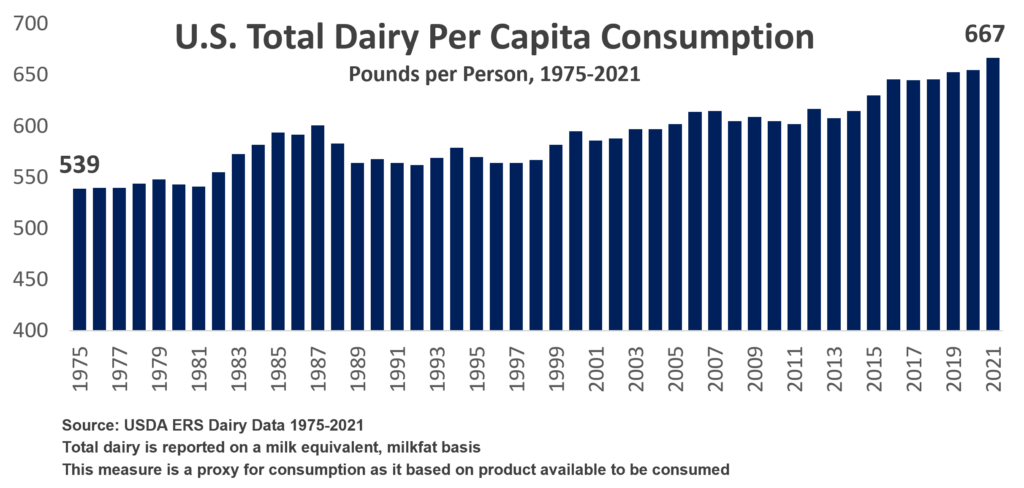DES MOINES, Iowa — A nutrition expert, an innovative dairy farmer and a global food-security leader shared how animal agriculture and dairy can be part of world climate and hunger solutions in a panel discussion side event at the World Food Prize. The panel also discussed the upcoming U.S. hosting of the 2023 International Dairy Federation World Dairy Summit in Chicago, the world’s biggest global dairy conference.
Panelists include Katie Brown, EdD, RDN, Senior Vice President for Scientific and Nutrition Affairs at National Dairy Council; Suzanne Vold, a dairy farmer near Glenwood, MN; and Jay Waldvogel, Senior Vice President of Strategy and International Development for Dairy Farmers of America and a board member of Global Dairy Platform, an organization that brings together dairy companies, associations, scientific bodies and other partners to collaborate pre-competitively to lead and build evidence on dairy’s role in the diet and show the sector’s commitment to responsible food production.
“To meet the grand challenge of nourishing a growing global population with limited natural resources, dairy is answering the call of providing sustainable, efficient, high-quality nutrition that can be accessed worldwide,” said Brown. “The foods we choose every day contribute to dietary patterns that can promote health and wellness and reduce risk of chronic diseases at all stages across the lifespan. Dairy foods now and in the future will be critical to meeting the challenges malnutrition poses to the planet, just as U.S. dairy will be important to making sure the world is sustainably nourished.”
“In a fragile world, dairy farms are strengthened by their generational focus and family bonds, a truth that’s followed by dairy farmers across the United States as they show global leadership in innovation,” said Vold. “In other words, we care for our cows and protect our resources so that our farms may thrive for generations to come and help nourish the needs of a growing world.”
“The global dairy industry is a one-billion-person community, starting with more than 130 million farmers around the world, with 600 million people living and working on those farms, farms that create 125 million jobs, jobs that are supporting hundreds of millions of other family members, collectively more than a billion people,” said Waldvogel. “The sheer scale alone indicates our role in food security. But even beyond that, if you look at how dairy plays out locally, its nutrition, its shorter supply chains, women-led in many cases, it’s a combination of the sheer size and scale of dairy and its role in food security, but also that local touch where dairy is very much around the corner for the people who need it.”
Panelists also discussed next year’s IDF World Dairy Summit, set for October 16-19, 2023 at Chicago’s McCormick Place conference center. The honor provides an opportunity to showcase the dairy sector’s innovations in sustainability, nutrition and health, standards, safety and quality, to accomplish its purpose of nourishing the world with safe, nutritious and sustainable foods.
The IDF World Dairy Summit provides a vital forum for dairy leaders, experts, farmers, processors, traders and journalists worldwide to discuss how to further advance the collective global dairy sector forward in a positive, sustainable way. Held in the United States for the first time since 1993, this year’s meeting is themed “BE Dairy –Boundless Potential. Endless Possibilities.” U.S. dairy is developing programming that will feature global and industry leaders, experts, scientists, technical specialists, farmers and more, exploring the global dairy sector’s most significant opportunities today and tomorrow.
For more information about the 2023 IDF World Dairy Summit, visit www.idfwds2023.com.
For more information about IDF, visit www.fil-idf.org. For more information about US-IDF, visit www.usidf.org.






